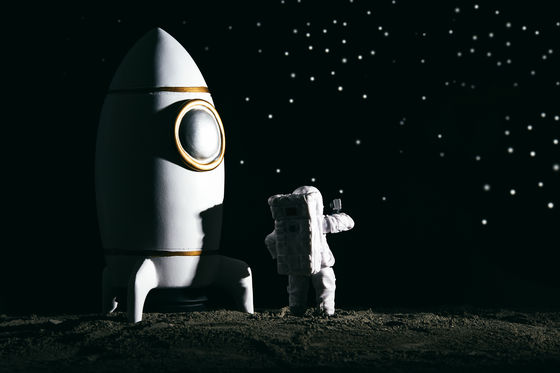The idea of turning the lunar south pole into a 'freezer' for biodiversity conservation

On Earth, many organisms are at risk of extinction due to habitat destruction, hunting, threats from invasive species, pollution, and climate change. Scientists have proposed the idea of freezing and preserving animal cells by using the lunar south pole, where such dangers are minimal and the temperature is stable.
Safeguarding Earth's biodiversity by creating a lunar biorepository | BioScience | Oxford Academic
Scientists devised an unexpected use for the moon. It's a vault. | Mashable
https://mashable.com/article/moon-lunar-repository-life-storage

In a paper published in the scientific journal BioScience, Mary Hagedorn, a senior scientist at the Conservation Biology Institute atthe Smithsonian National Zoo in Washington, and her colleagues proposed a 'lunar biorepository for long-term storage of live cryopreserved samples to protect Earth's biodiversity and support future space exploration and planetary terraforming.' As a starting point for the project, they are focusing on stably preserving cell samples of organisms whose diversity is threatened on Earth by freezing and preserving animal skin samples on the moon.
Cryopreservation technology has attracted the attention of many researchers as an innovative strategy that can keep cells alive for hundreds of years while frozen. In a paper published by researchers at the Genome Center of the University of the Philippines Diliman, they demonstrated successful cases of thawing cryopreserved cells and recovering DNA, intact cells, and whole functioning organisms.
Low-temperature storage facilities for stably freezing and preserving cell tissue samples include the Ambrose Monell Cryo-Collection at the American Museum of Natural History, but experts point out that 'all of these biorepositories require intensive human management, electricity, and a continuous supply of liquid nitrogen, making them vulnerable to unpredictable natural and geopolitical disasters. Today, many frozen collections are stored in urban centers and are exposed to the threat of destabilization.' The image below shows a liquid nitrogen freezer for preserving collections at the American Museum of Natural History.

On the other hand, there is an area of the moon between 80 and 90 degrees south latitude, known as the '
The south pole of the moon is also attracting attention in the Artemis program , which is being carried out by the US federal government in cooperation with NASA. The image below shows the planned landing area for the Artemis program, released by NASA. In the south pole of the moon, where almost no light reaches, 10 points that can receive sunlight have been designated as planned landing sites.

Although the temperature on the moon is suitable for freezing and storing cells, the researchers point out that there are five problems that need to be solved before actually building a cryogenic storage facility on the south pole of the moon. The first is the problem of 'packaging,' which requires the development of 'robust packaging' that protects cells from not only low temperatures but also various harsh conditions. The second is the problem of 'radiation,' which is one of the harsh conditions, and on the surface of the moon, which is exposed to much higher levels of radiation than on Earth, antioxidants and physical barriers must be properly developed to protect cells.
Third, even if the cell samples are frozen and stored in a place away from sunlight at the south pole of the moon, the rocket will land in a place exposed to light, so a rover will be needed to transport them from the landing site to the storage site while maintaining the temperature.

A fourth problem is competition for resources. The permanently shadowed regions at the south pole of the Moon are thought to contain valuable 'moon ice.' Because lunar ice is a resource that is also useful for producing rocket fuel, the permanently shadowed regions 'are popular areas valued by various countries and may be tightly restricted and controlled,' the researchers said.
Direct evidence of ice on the moon found - GIGAZINE

By Jonatan Pie
Finally, the Moon's gravity is only one-sixth that of Earth, and there is a lack of research into how cell samples will be affected when exposed to such low gravity.
Although these issues need to be resolved, the idea of freezing and storing cell samples on the moon is an important idea because it does not require electricity and is not vulnerable to environmental or social disturbances, the researchers say. The first species to be preserved are likely to include endangered species, pollinator species, and culturally important species. 'As lunar exploration facilities proliferate as bases for industry and various scientific research, protecting life on Earth must be a top priority,' the researchers say.
Related Posts:







